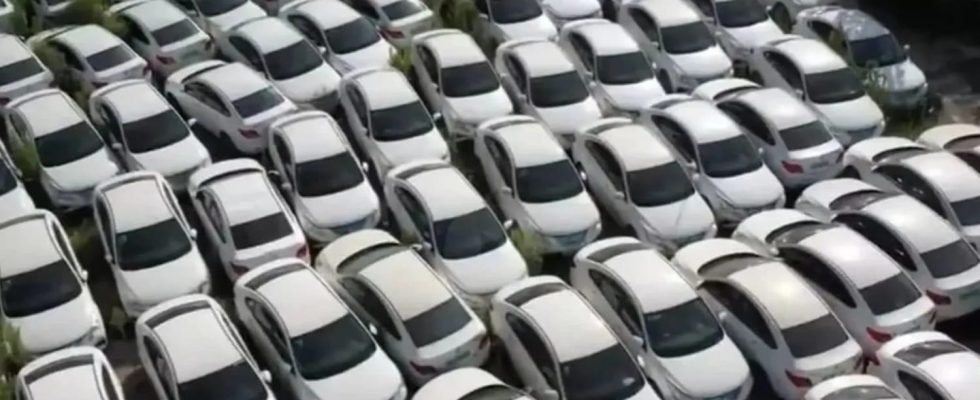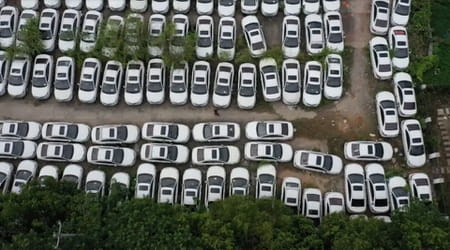Hundreds of electric cars have been abandoned in dismal graveyards that proliferate across China.
Staggering footage has emerged showing endless rows of nearly identical vehicles piling up in a field in the city of Hangzhou. These “electric car graveyards” have been seen sporadically since 2019 in at least half a dozen Chinese cities.
Some of these cars have been there for so long that plants are growing in their trunks. Others have been abandoned so quickly that lint still sits on their dashboards. But whether they’ve been around for a long time or recently, nearly all vehicles are white – with some silver or light blue hues.
This is likely due to the fact that Chinese customers tend to choose light tints for electric vehicles and because these are the preferred colors on ride-sharing apps. However, the failure of these ride-sharing companies could explain the astonishing number of abandoned vehicles. There are now just 100 Chinese electric car makers, down from about 500 in 2019, according to Bloomberg.
Hundreds of ride-sharing companies have sprung up over the past decade, taking advantage of government incentives. But when these were reduced in 2019, many went bankrupt and had to get rid of their fleet. The massive abandonment of cars is also partly a result of the rapid rise of China’s electric vehicle industry.
With the rapid launch of new models by several manufacturers, existing vehicles quickly became obsolete. Instead of selling the obsolete models on the second-hand market, it was easier and possibly cheaper to just dump them in a field.
According to local media reports, the Hangzhou government promised to get rid of the cars, which started piling up in 2019. However, more than 200 white cars were found carelessly parked in the same field, Bloomberg reports.
All were manufactured by Chongqing Changan Automobile Co., and appeared to be operated by ride-hailing companies Didi Chuxing Technology Co. and Faststep Automobile Management. All had blue plates, indicating they were manufactured and registered before December 2017, when Hangzhou switched to green plates for new energy vehicles. Registration stickers show that some would have circulated on the roads until 2021.
A similar situation occurred in the country’s bike-sharing market in 2018, resulting in hundreds of thousands of bikes being abandoned across China.

